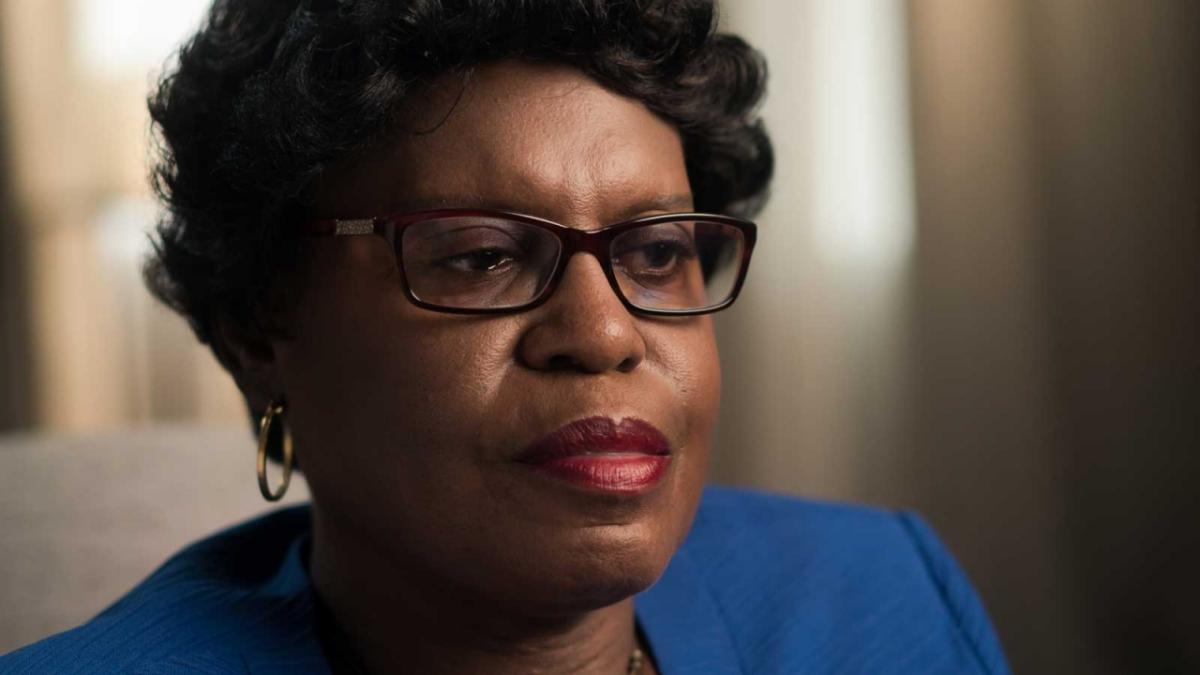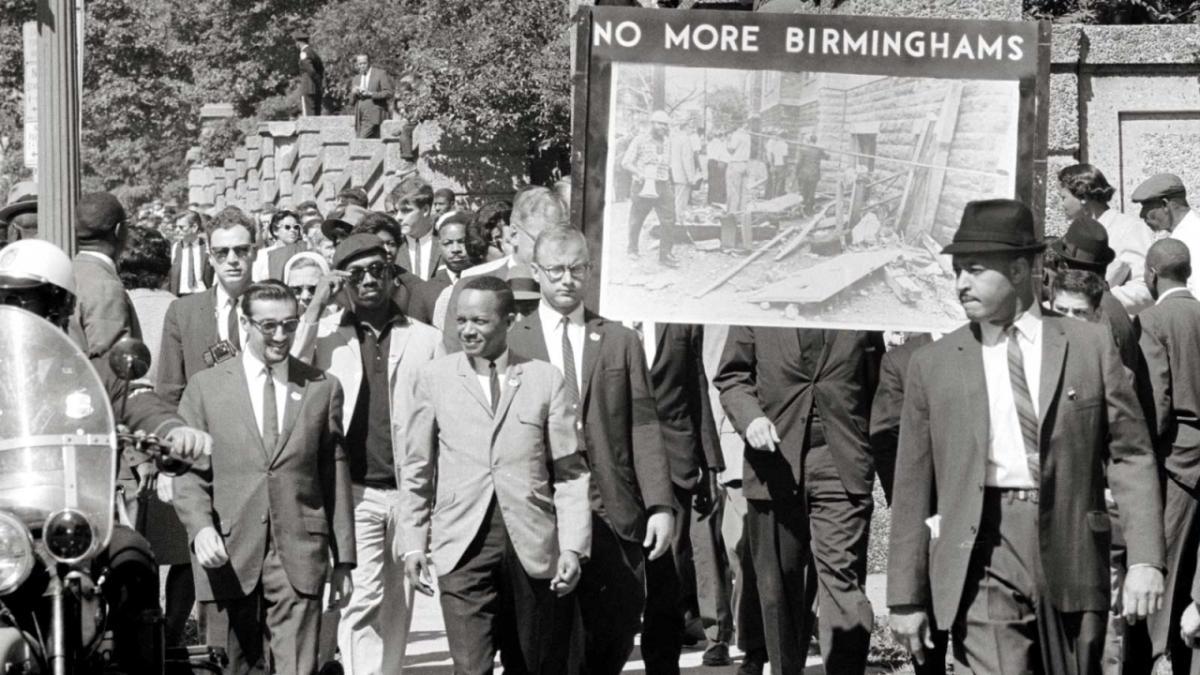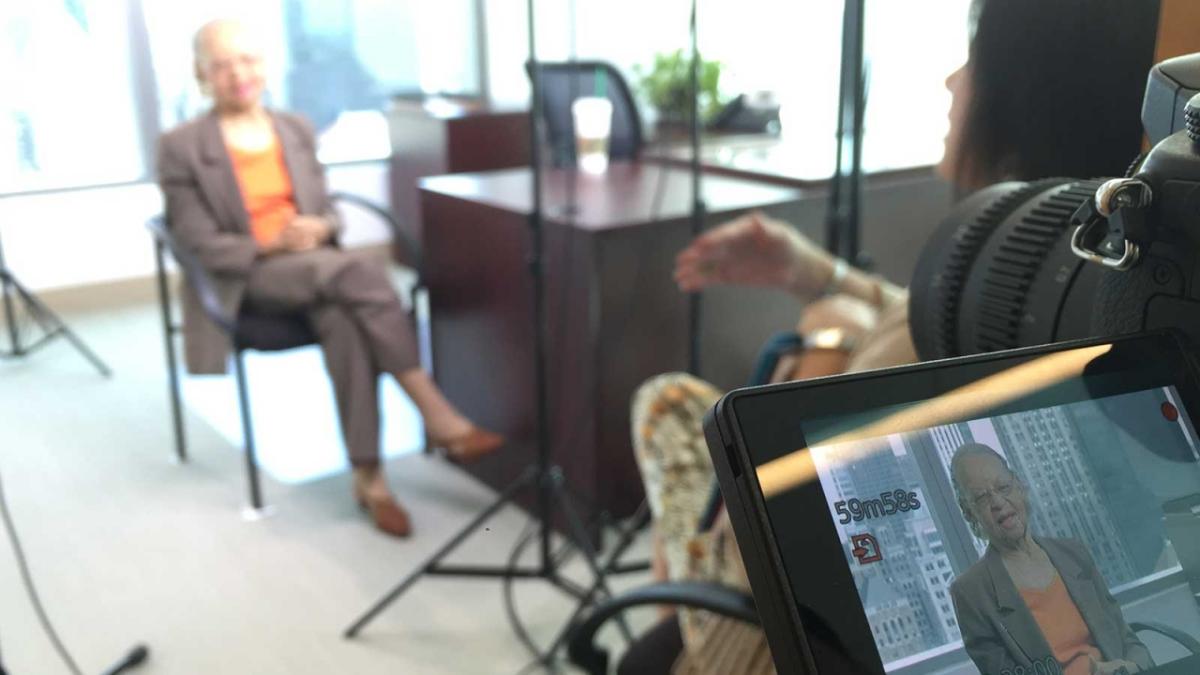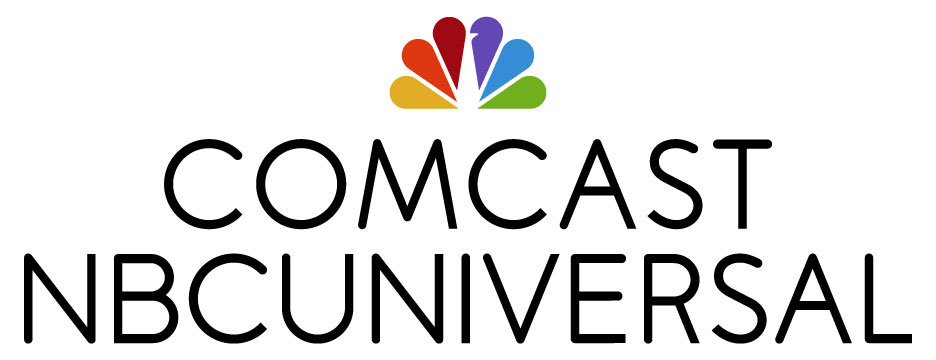Voices Carry: The Hidden Heroes of the Civil Rights Movement
As featured in the 2018 Comcast NBCUniversal Corporate Social Responsibility Re…
On September 15, 1963, four Ku Klux Klansmen planted 15 sticks of dynamite and a timing device in the 16th Street Baptist Church in Birmingham, Alabama. Four African-American girls between the ages of 11 and 14 were killed in the blast. Dr. Martin Luther King Jr. called it “one of the most vicious and tragic crimes ever perpetrated against humanity.”
Sarah Collins Rudolph, sister of victim Addie May Collins, was there too. Yet even though Rudolph was part of one of the watershed moments in civil rights history, her story has seldom been told.
“The coverage focused on the four little girls,” says Ebonne Ruffins, Vice President of Local Media Development for Comcast, whose team interviewed Rudolph in early 2018. “But there was a fifth girl in the bathroom that day. Four died and one survived.”
“One of the first things Sarah said when I met her in Birmingham was, ‘Do you know how few people know I exist?’”
Rudolph’s story is one of more than 150 firsthand accounts of America’s struggle for racial equality featured in Voices of the Civil Rights Movement, a multimedia collaboration between Comcast NBCUniversal and the Equal Justice Initiative. The project, which celebrates its fifth anniversary in 2018, chronicles the movement’s history through video interviews, historical moments, museum installations, and reflections submitted by the general public.
In her interview, Rudolph remembers details from the bombing. How it was youth day at church, and she was standing with her sister and friends moments before the explosion. How shattered glass from the blast temporarily blinded her (she eventually lost an eye). Her confusion as she called for her sister. Deacon Samuel Rutledge rescuing her.
She was hospitalized for months, and to this day she still bears the scars of losing her sister and friends. Her story reveals the emotional impact of racial violence in a way that yellowed newspaper clippings and thirdhand accounts can’t.
“These are human stories that capture the very broad spectrum of trial, fortitude, and courage,” Ruffins says. “The intention in creating Voices of the Civil Rights Movement was, and remains, to capture firsthand experiences. We hope viewers will gain a new lens on the deeply personal stories of everyday people on the frontlines of America’s civil rights movement.”
As a global media and technology leader, we embrace the opportunity to educate our audiences and inspire conversations about issues that matter. Our resources and reach also allow us to dig deeper and unearth personal stories that add context and meaning to our understanding of the world. With Voices of the Civil Rights Movement, we’re carrying these stories forward for everyone to hear.
In addition to Rudolph, Voices of the Civil Rights Movement features unsung heroes such as Marie Greenwood, one of Denver’s first African-American public school teachers, who opened the door for future generations of teachers of color. And Temple University’s Charles Blockson, an author and curator who has the largest collection of African-American artifacts in the world.
“I asked Mr. Blockson why he collected so many artifacts — 500,000 items — including Harriet Tubman’s hymnal and shawl,” says Ruffins, who has helmed Voices of the Civil Rights Movement since 2016. “His motivation started at age 9, when he asked a teacher whether the Negro had a history. She responded, ‘No, Charles, Negroes were born to serve white people.’ Mr. Blockson’s collection is more than his personal triumph. It is a rare preservation of history for everyone to cherish.”
Comcast NBCUniversal launched Voices of the Civil Rights Movement in 2013 to commemorate the 50th anniversary of the March on Washington for Jobs and Freedom. Originally titled His Dream, Our Stories, the project compiled firsthand accounts from civil rights leaders and others who attended the march and witnessed MLK’s famous “I Have a Dream” speech.
By the time the project launched, our list of potential interviewees had grown exponentially, as every person we profiled recommended new people for Comcast to interview. “The list grew and grew and grew, and in fact, it’s still growing,” Ruffins says.
In 2015, the platform’s name evolved to Voices of the Civil Rights Movement, in part to honor the movement’s lesser-known voices and events. In addition to interviewing civil rights icons such as U.S. Rep. John Lewis (D-Ga.) and former U.N. Ambassador Andrew Young, we began exploring how the civil rights struggle played out in the lives of average Americans. Many of our subjects are telling their stories to the media for the first time, a privilege we take seriously.
“We have an amazing opportunity to connect with people and honor our history, but it’s also a tremendous responsibility,” Ruffins says. “This might be the last and only chance for people to record their experiences. We feel obligated to get it right and capture their legacies.”
The project’s ambition has grown each year. In 2014, a partnership began with National Civil Rights Museum founder D’Army Bailey and the Equal Justice Initiative to launch a series of video vignettes that recount specific moments in civil rights history. The vignettes provide historical context for major civil rights events from 1619 through the 1970s.
In 2016, we began sharing the interviews and vignettes on social channels such as Facebook and Twitter, giving them a longer life and a broader reach. We created a “Share Your Story!” feature that invites website visitors to share their own memories from the civil rights movement or reflect on its legacy. We also launched an ongoing traveling exhibit initiative to provide the content, on loan, to museums that showcase African-American history and culture. And in 2017, we gained a permanent presence on Xfinity On Demand.
“There’s a beautiful connection that happens whenever we publish a story online, On Demand, or on social,” Ruffins says. “The lion’s share of the feedback we receive is heartfelt messages of gratitude to the hero. Sometimes viewers will organically add to the stories and write, ‘I was there too,’ or family members will comment, ‘Oh my gosh, that’s my uncle’s or grandfather’s story.’ The dialogue is a testament to the platform’s power and impact.”
In April 2018, we observed the project’s fifth anniversary by serving as technology sponsor for the 50th anniversary commemoration of MLK’s assassination, hosted by the National Civil Rights Museum. In addition, MSNBC and NBC News produced and aired Hope and Fury: MLK, the Movement and the Media. The two-hour documentary explored how King and other civil rights leaders used the power of print and visual media — especially television — to awaken America to the shame and injustice of racial inequality.
We’re also hosting special events throughout 2018 for our interview subjects, their families, the press, and select Comcast NBCUniversal employees.
Ruffins says part of what makes Voices of the Civil Rights Movement special is its clear reflection of the company’s highest ideals. “Comcast NBCUniversal’s purpose is to connect the best content and entertainment experiences to our customers and audiences,” she says. “Connect is our operative word. We’re using our platform to bridge generations together, fill in historical gaps, and share our heroes’ stories as widely as possible. While we’ve reached a tremendous milestone in five years, what’s most exciting is the content’s indefinite lifeline. There will always be more stories to capture, share, and learn from.
Ebonne Ruffins knew she had an amazing resource on her hands, and she wanted to make sure others knew it too.
“A top priority when I joined Comcast’s Local Media Development team was to give Voices of the Civil Rights Movement a much broader life and agency than it had ever had before,” Ruffins says. “Our content is so rich and interesting, and I didn’t want it to stay contained within our website. So I challenged my team to take stock of every single Comcast NBCUniversal asset and identify ways to share this material with as many people as possible.”
Thinking strategically is natural for Ruffins, who oversees the planning, technical development, and creative vision and execution of Comcast NBCUniversal’s domestic local platforms and programming. A former producer at CNN, she knows the advantage of a far-reaching platform.
“We’re so proud to carry these voices forward,” Ruffins says. “The 1960s media — particularly print news, broadcast television, and radio — played a tremendous role in educating Americans on civil rights and advancing the movement’s goals of social justice. Supplementing footage from that era with reflective stories from the people who actually lived it is a powerful reminder of the media’s enduring ability to instigate positive change in our communities.”
*To learn more, visit CivRightsVoices.com or say “Voices of the Civil Rights Movement” into your X1 remote.





